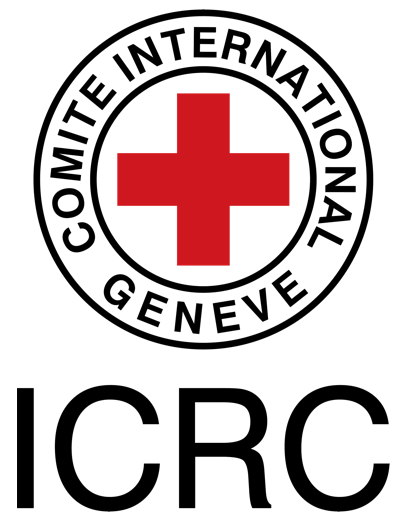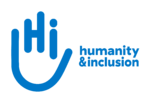Category:Paediatrics
Paediatric physiotherapists help children to achieve their optimal physical development. They have specialist knowledge in the movement, development and conditions that are likely to affect the baby and growing child and treat from 1-day-old babies to adolescents. Treatment may involve soft tissue massage, mobilisation, stretching, specific therapeutic exercises and posture education. Because Children are not small adults these therapists encourage children to move to the best of their abilities through play and age appropriate fun and instruction.
Subcategories
This category has the following 14 subcategories, out of 14 total.
C
D
- Down Syndrome - Trisomy 21 (4 P)
M
- Muscular Dystrophy (16 P)
P
- Paediatrics - Case Studies (15 P)
- Paediatrics - Conditions (125 P)
- Paediatrics - Guidelines (3 P)
- Paediatrics - Interventions (56 P)
- Paediatrics - Outcome Measures (32 P)
- Paediatrics - Physical Activity (13 P)
R
- Resources - Paediatrics (2 P)
S
- Spina Bifida (2 P)
Pages in category "Paediatrics"
The following 200 pages are in this category, out of 368 total.
(previous page) (next page)A
- A Task Oriented Approach to Assessment and Training of Infant Sitting
- Achilles Tenotomy
- Activities for Training Infant Sitting
- Activities of Daily Living in Cerebral Palsy
- Acute Disseminated Encephalomyelitis
- Adaptive Seating for Children
- Adherence in Clubfoot Treatment
- Adolescent Idiopathic Scoliosis and Back Pain
- Advanced Gross Motor Skills in Children
- Advanced Technological Usage in Nuchal Posture Among Students (TEXT NECK)
- Alberta Infant Motor Scale (AIMS)
- An Overview of Telehealth and Paediatrics
- Angelman Syndrome
- Animal Assisted Therapy
- Annular Ligament
- Arthrogryposis Multiplex Congenita
- Asperger Syndrome
- Assessing Children with Clubfoot
- Assessing Clubfoot Treatment (ACT) Tool
- Assessment and Exercise Interventions in Early and Middle Childhood Development
- Assessment and Questionnaires for Children with Pain
- Assistive Devices
- Assistive Devices for Cerebral Palsy
- Asymmetrical Tonic Neck Reflex
- Attention Deficit Disorders
- Atypical Clubfoot
- Au-Kline Syndrome
- Autism Spectrum Disorder
- Autism Spectrum Disorder and Motor Development
B
- Baby-CIMT (Constraint Induced Movement Therapy for infants)
- Backpack Carriage and Low Back Pain in Schoolchildren and Adolescents
- Bangla Clubfoot Tool
- Barriers and Facilitators to Physical Activity in Individuals with Cerebral Palsy
- Bayley Scales of Infant and Toddler Development
- Becker Muscular Dystrophy
- Bedtime Routines Questionnaire
- Behavioral problems in children
- Benefits of Physical Activity of Children With Cerebral Palsy in Mainstream Schools
- Benign Joint Hypermobility Syndrome
- Best Practice in Developmental Skills Training in Early Intervention
- Biomechanics for Cerebral Palsy Orthotics
- Blount's Disease
- Brachial Plexus Injury
- Bracing for Clubfoot
- Breast Feeding and Physiotherapy
- Bronchiolitis
- Bronchopulmonary Dysplasia
C
- Canadian Physical Activity and Sedentary Behaviour Guidelines
- Case Presentation of Physiotherapy Management for a Paediatric Patient with Bilateral Symes Amputation: Amputee Case Study
- Case Study - Displaced Adolescent
- Case Study - Displaced Child
- Case study lower limb amputation: Amputee Case Study
- Case study of hydrotherapy intervention in a child with spastic diplegic cerebral palsy
- Case Study: Adolescent Anterior Knee Pain
- Casting for Clubfoot
- Cerebral Palsy Aetiology and Pathology
- Cerebral Palsy and Sport
- Cerebral Palsy Effects through Lifespan
- Cerebral Palsy General Assessment
- Cerebral Palsy Interventions
- Cerebral Palsy Introduction
- Characteristics and Categories of Risky Play
- CHARGE Syndrome
- Child Development
- Child Health Conditions and Migration
- Child SCAT5
- Child to Child Approach with Cerebral Palsy
- Childhood Obesity
- Children Wellbeing and Development During Covid-19
- Children with Cerebral Palsy and Behavioural Problems
- Children with Medical Complexity
- Children's Hospital of Eastern Ontario Pain Scale
- Children's Sleep Habits Questionnaire (CSHQ)
- Classification of Cerebral Palsy
- Classification of Gait Patterns in Cerebral Palsy
- Clinical Guidelines: Paediatrics
- Clubfoot with Post-Surgical Relapse
- Clubfoot, Management and Barriers to treatment in underdeveloped countries.
- Cobb Angle
- Common Errors in Clubfoot Management
- Communication and Children with Cerebral Palsy
- Communication in Early Intervention
- Complexities of Pain Assessment
- Congenital and Acquired Neuromuscular and Genetic Disorders
- Congenital Hand Deformities
- Congenital Heart Disease
- Congenital Myopathies
- Congenital Spine Deformities
- Congenital Suprabulbar Palsy
- Congenital torticollis
- Considerations For Working With Displaced Children
- Constraint Induced Movement Therapy
- Cortical (Cerebral) Visual Impairment And Its Impact On Children With Cerebral Palsy
- COVID-19 in the Paediatric Population
- Craniocervical Instability in Down Syndrome
- Creating a Clubfoot Clinic
- Cuevas Medek Exercises (CME)
- Cystic Fibrosis
D
- Developing Physically Active and Sporty Kids - Benefits and Barriers
- Developing Physically Active and Sporty Kids - Injuries Specific to Children and Teenagers
- Developing Physically Active and Sporty Kids - Overuse Injuries and Burnout
- Development of Sitting
- Development of the Child with Cerebral Palsy
- Development Skills Training for the 1-2 month old
- Developmental Coordination Disorder and Physical Activity
- Developmental Disabilities in Early and Middle Childhood
- Diagnosis of Cerebral Palsy
- Down Syndrome (Trisomy 21)
- Down Syndrome Developmental Milestones and Physical Activity
- Duchenne gait
- Duchenne Muscular Dystrophy
- Duchenne Muscular Dystrophy - A Case Study
- Dysgraphia
- Dyslexia
- Dysphagia
E
F
- Faces Pain Scale
- Faces Pain Scale - Revised
- Facial Nerve Paralysis in Children
- Family Centred Intervention and Early Diagnosis
- Feeding and the Swallow Mechanism
- Feeding the Child with Cerebral Palsy
- Fetal Alcohol Spectrum Disorder (FASD)
- Flexion Deformity of the Knee
- Flexion withdrawal reflex
- Foetal Motor Development
- Fostering Behaviour Change in Obese Adolescents
- Functional Walking Test (FWT)
G
H
- Hand Function 0-7 months
- Hand Function 7-24 Month Period
- Hand Function Assessment and Training
- Hand-Arm Bimanual Intensive Training Including Lower Extremities (HABIT-ILE)
- Handling the Child with Cerebral Palsy
- Health Benefits of Outdoor Time
- Hereditary Spastic Paraplegia
- High Functioning Cerebral Palsy Physiotherapy Assessment and Intervention
- Hip Displacement in Cerebral Palsy
- Hip Dysplasia
- Hippotherapy
- HIV and AIDS in Children
- Holistic Healthcare Interventions for Children
- Hydrocephalus
- Hydrotherapy for Children with Cerebral Palsy
- Hyperkinetic Movement Disorder
- Hypernatremia
- Hypertonia Assessment Tool
- Hypocalcemia
- Hypoxic Ischemic Encephalopathy
I
- ICF and RPS within Cerebral Palsy
- ICF Model and Goal Writing in Paediatrics
- ICF-CY International Classification of Functioning, Disability and Health Children and Youth Version
- ICRC Cerebral Palsy Content Development Project
- Idiopathic Bilateral Clubfoot
- Idiopathic Bilateral Clubfoot - Pirani score 6
- Idiopathic Scoliosis
- Idiopathic Toe Walking
- Idiopathic Unilateral Clubfoot
- Imperforate Anus
- Inclusion of Children with Disabilities in Free Risky Play
- Infant Development
- Infant Development in Prone
- Infant Development in Supine
- Infant Neurological International Battery (INFANIB)
- Infant Terminology and Reflexes
- Infantile Brachial Plexus Injury
- Infantile Hemiplegia
- Introduction to Clubfoot
- Introduction to Paediatric Physiotherapy
K
L
- Learning Through Play with Cerebral Palsy
- Learning To Stand - Development and Training
- Leg Length Discrepancy
- Legg-Calve-Perthes Disease
- Limb Girdle Muscular Dystrophy
- Lissencephaly
- Little League Elbow
- Low Back Pain and Young Athletes
- Low Functioning Cerebral Palsy Physiotherapy Assessment and Intervention






